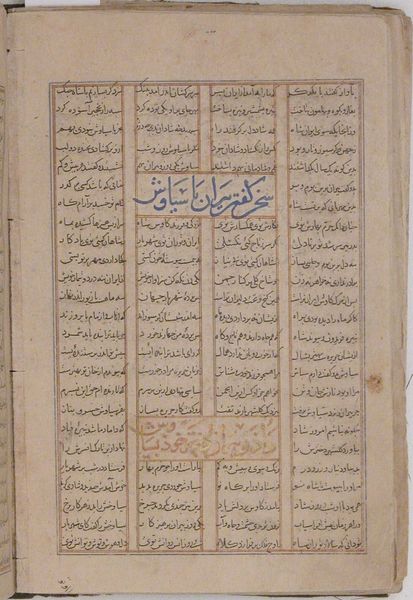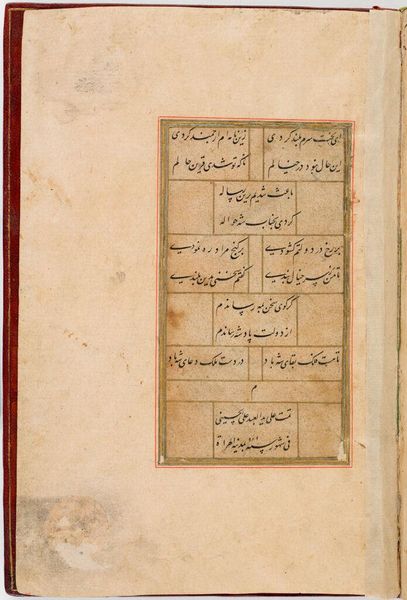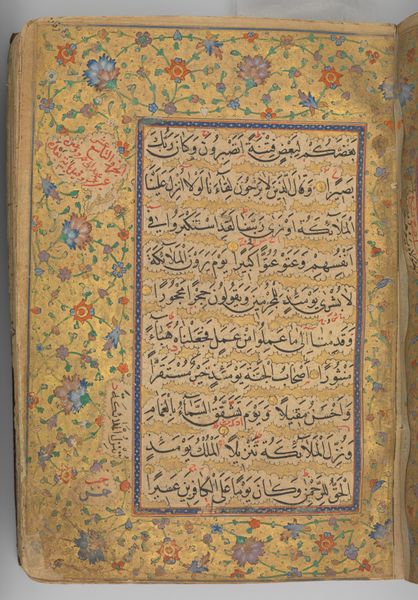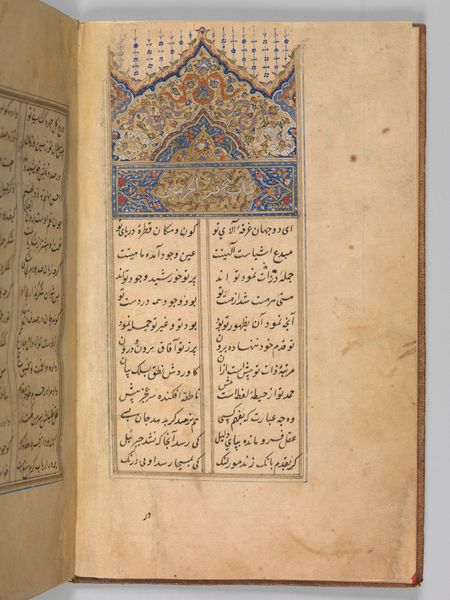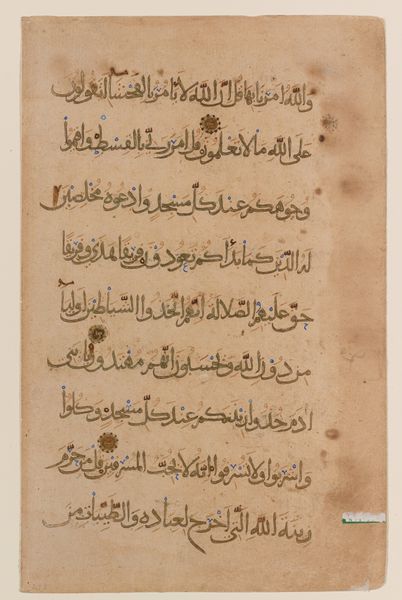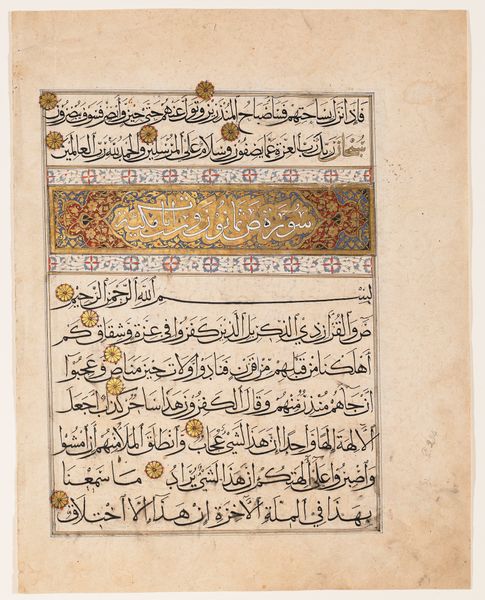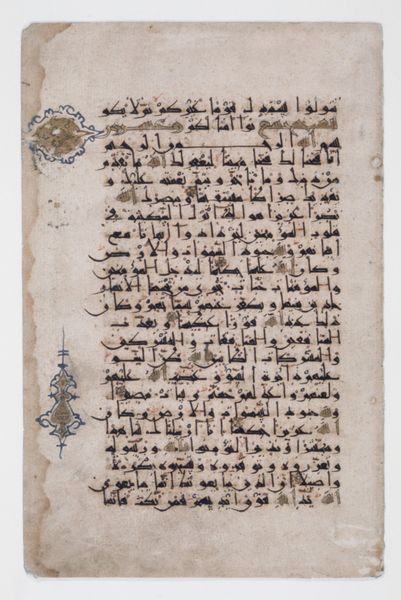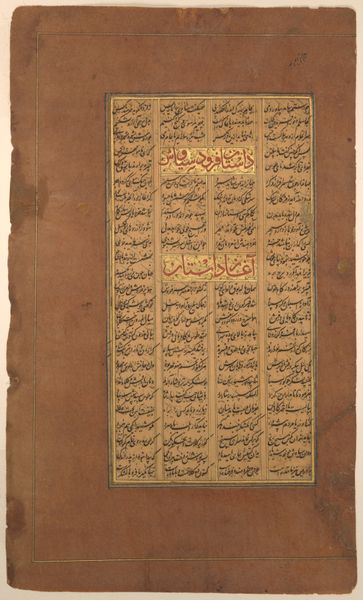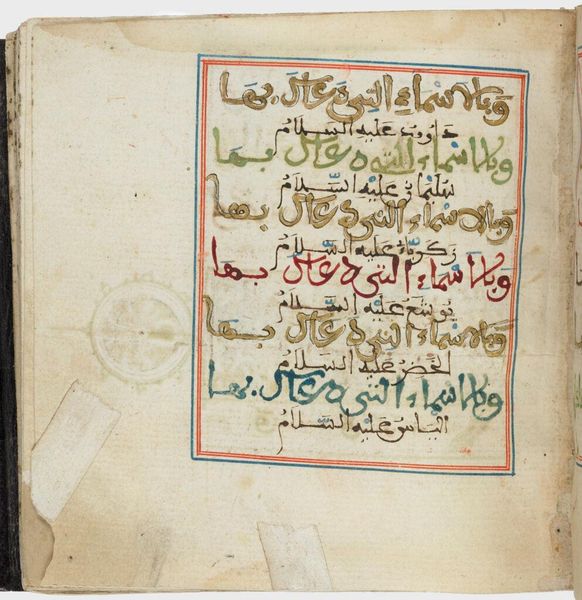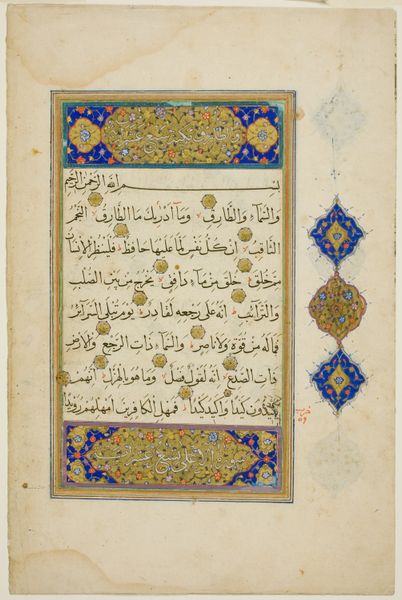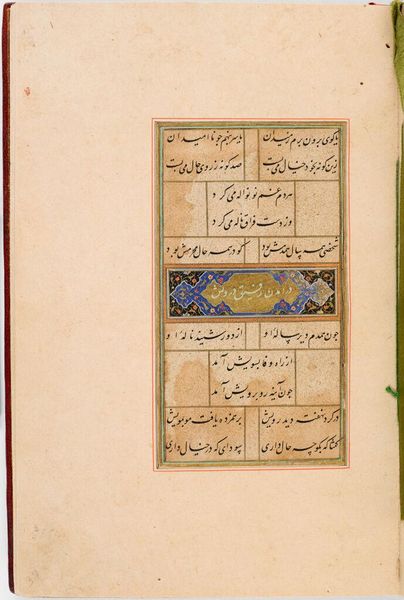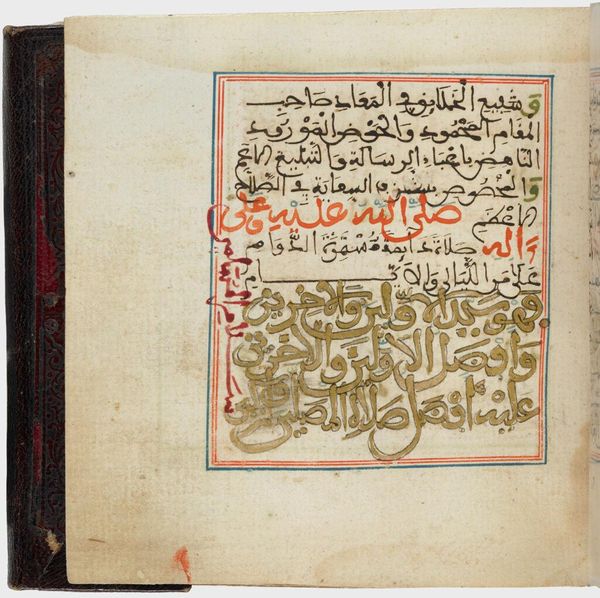
paper, ink
#
medieval
#
paper
#
ink
#
coloured pencil
#
islamic-art
#
calligraphy
Dimensions: H. 6 in. (15.2 cm) W. 4 in. (10.2cm)
Copyright: Public Domain
Curator: It strikes me as deeply calming; there’s something about the script that feels both precise and fluid. Is it possible to decipher? Editor: Indeed. What we're viewing is a page extracted from "Divan", a compilation of poetry by 'Umar ibn al-Farid, created sometime between 1570 and 1620. Preserved on paper with ink, it’s now housed at the Metropolitan Museum of Art. The term "Divan" in this context refers to a collection of poems, a customary arrangement in Persian and Arabic literary traditions. Curator: The density of the calligraphy almost transforms it into an abstract design. I'm drawn to the areas of illumination that stand out. Does the style itself hold any symbolic significance? Editor: Absolutely. The script is not merely writing but a devotional act in itself. Calligraphy, particularly in Islamic art, is deeply interwoven with spirituality. The meticulous rendering is considered a form of worship, as the written word embodies the divine message of the Quran and helps disseminate and preserve this scared script and tradition. Curator: Knowing the cultural context adds so much weight to my viewing experience. It ceases to simply be text on a page. But I confess the language barrier prevents me from knowing more. Editor: What we see on this specific page would be verses from a poem, meticulously arranged, often praising God or exploring themes of love and devotion. The use of specific colors and gilding, elevates certain words or phrases and brings to attention an intended emphasis. Curator: Do you get the sense it was designed for personal reflection or a public reading? Editor: Probably a combination of both, or something in between! A divan would likely have been admired for its aesthetic qualities within a courtly setting but equally treasured for private contemplation. These objects weren't necessarily accessible to the general public but certainly had a function beyond solely the personal. Curator: That’s intriguing. It's as if the artistic intent resides not just in what the words communicate but in the act of visually preserving them. Editor: Precisely. It offers an interesting intersection where artistic expression serves as a vehicle for faith, knowledge, and cultural continuity. Thanks for guiding us through this meditation today. Curator: The pleasure was mine; every symbolic detail seems an act of preservation itself.
Comments
No comments
Be the first to comment and join the conversation on the ultimate creative platform.
